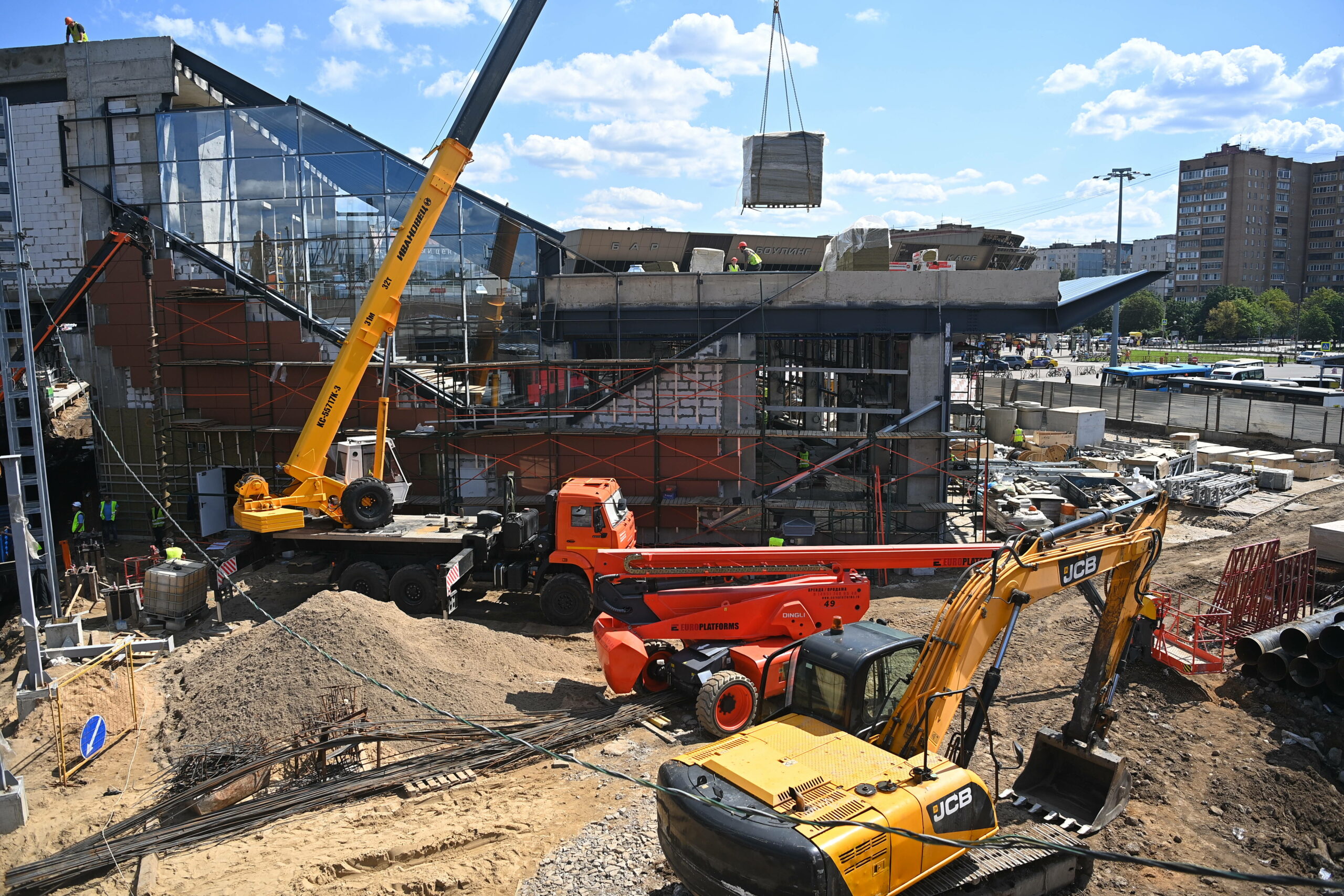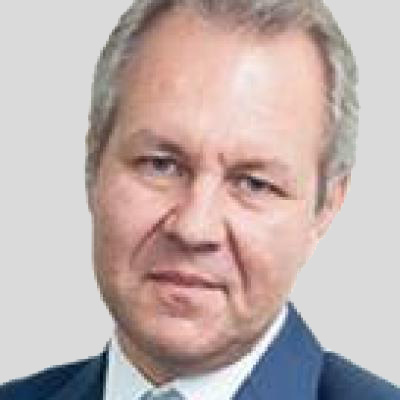Over the past few months, Russian economists have been constantly returning to the discussion on employment: between January 2021 and December 2022, unemployment in the country declined from 5.8% to 3.7% of the working-age population (according to official data), reaching a record low of 3.2% by the summer of 2023. Officials keep talking about the growing workforce shortage: they claim that manufacturing companies are short of 650,000 people, the IT sector lacks 1 million, and the construction sector needs almost 2 million workers. Even Elvira Nabiullina, the governor of the Bank of Russia, directly linked this problem to inflation risks in her recent speech («when demand begins to exceed the capability to increase supply and if this is a steady phenomenon, it inevitably leads to price increases because companies cannot instantly launch new production facilities and find additional workers for them»). She also highlighted the limited labour resources as a factor that should be taken into account when developing the monetary policy.
Over the past year and a half, the labour market in Russia has experienced several powerful shocks: two waves of relocation, mobilisation of nearly half a million people, serious changes in the dynamics of employment across sectors. However, thinking back to what virtually the same officials used to say in peaceful times, even before COVID, we heard about 350−400 thousand workers required by the military industrial sector, about the need to invite guest labourers to work on construction sites, and about a glaring shortage of personnel in the information industry. Nowadays, when the outstripping growth of real wages versus to labour productivity is named among the risks to the economy, it may be worthwhile recalling that in 2000−2009 the former indicator grew on average by 10% per year, and the latter by merely 4.4%, whereas economic growth looked more than successful (at least in the context of the current dynamics).
This topic is considered extremely relevant today since almost all sectors are clearly experiencing workforce shortages, and are obviously affected. However, the labour shortage is not the main brake on Russia’s economy since it suffers from many other problems (feeble private investment, the exodus of foreign companies, the risk of new mobilisation and the rising prices which constrain demand). On the other hand, hidden unemployment continues to be high. However, once we dive deep into this topic, we should focus not so much on the ‘general’ employment problem, but on several relatively ‘particular’ ones.
The overall workforce deficit in the Russian economy has recently been caused by three factors, and it is extremely difficult to dissect them in quantitative terms. To begin with, there has been a catastrophic collapse in the number of workers at the most productive young age, i.e. those aged 16 to 35 (their number fell by 1.33 million throughout 2022, and their share in the total labour force hit the all-time low for the entire history of observations). This is partly due to the progressive ageing of the population and the fertility gap occurring during the first half of the 1990s, but mostly due to people’s flight from war and mobilisation (it is estimated that 80−90% of those who left the country were aged up to 45). Moreover, at least 350,000 men have been mobilised for military service, and this number is certain to grow in the context of the new conscription laws and the planned increase in the size of the Armed Forces by almost half a million people. One additional factor is the reluctance prevailing among people of conscription age to take up official positions since employers tend to actively cooperate with military conscription commissions. This phenomenon was highly noticeable last year but partly persists today as well. Finally, compared to pre-COVID times, the number of migrants in Russia has declined significantly since 2021 (and 2021 saw the first migration outflow, which has not yet been replenished). This was driven by the devaluation of the rouble by a factor of 1.5, coupled with the rising cost of living in Russia, and the dramatically declining appeal of Russian citizenship, which is now associated with the prospect of military mobilisation. That said, all these ‘general’ points do not paint the entire picture of the problem.
When we look at what I call ‘particular’ topics, three of them can be identified.
The most noticeable one today is a serious regional imbalance between the labour supply and labour demand. After some sectors were restructured into a military-style economy, this caused a sharp increase in industrial production in a number of regions, primarily in the Ural (the Sverdlovsk and Chelyabinsk Regions), in the Volga Region (from the Penza Region to Udmurtia), and in some central areas (such as the Tula Region): the growth rate has ranged from 10% to 19%. In contrast, a serious setback was recorded in regions where Western companies with labour-intensive production facilities used to have a strong presence (the industrial output in the Leningrad, Kaluga and Kaliningrad Regions has declined by more than 15%). Meanwhile, in recent months, Russia has hardly experienced any inter-regional labour migration: companies operating in the ‘failing’ car manufacturing regions came to a halt and either kept their employees on reduced wages or sent them on unpaid leave (currently, more than 4 million people work part-time, and at least 2 million others earn an income below the minimum wage threshold), but they are trying to retain their pool of workers in case enterprises may restart, as expected. This is why, for instance, official employment figures in the Kaluga Region have remained at record low levels, reached even before the start of the war and the exodus of Western enterprises.
The second significant circumstance is related to shifts in age and gender. For example, when the authorities attempted to raise the retirement age in 2018, the assumption was that workers who do not retire would work longer. However, the demand for mature workers remains low, even despite the aforementioned decline in younger age cohorts. Purely quantitative indicators of labour force participation do not reflect this disproportion, and the problem of employment among people aged 60+ persists, even in regions that are traditionally known to struggle with labour shortages. At the same time, mobilisation and emigration have radically changed the gender balance within the workforce, sharply increasing the demand for women’s labour, and the latter have begun to assume positions previously monopolised by men. As a consequence, the wage gap between men and women in Russia, standing at 29% before the war, has narrowed down, although the statistical evidence of this trend is yet to be seen. In other words, the deficit in the market of young male workers is more likely to be filled by women from the same age groups than by men from older age groups.
Finally, when it comes to the sectors previously employing a significant number of migrants, the workforce shortage is more noticeable than elsewhere, for two reasons. On the one hand, the market is under pressure due to the reduced availability of migrant workers, mostly assuming low-paid positions attracting hardly any Russian candidates. This is despite the growth of construction workers’ wages, which is steadily outstripping inflation. In fact, the wages have recently become higher than the average pay for the respective regions. On the other hand, tens of thousands of Russian construction workers are now mobilised to work in the occupied Ukrainian territories, behind the enemy lines of the ‘special operation’ zone. The statistics for the Rostov Region and Crimea reveal a 60−65% increase in construction work over the last 12 months but there is no benchmark to draw a comparison with the recently occupied regions. Nevertheless, wages starting from 200 thousand roubles attract construction workers from many regions of Russia, despite the risks associated with such work. Therefore, the shortage of workforce at building sites will remain a chronic problem of the construction industry in the near future, unlikely to be solved.
Returning to macroeconomic issues, let me emphasise a few arguments that will explain why I claim, in the title of this article, that the workforce shortage problem does not exist.
In fact, a workforce shortage is not an inherent feature but, rather, a relatively artificial problem of the Russian economy, arising due to the rather particular attitude towards the country’s labour resources, as displayed by the authorities and businesses.
Russia’s authorities have ‘historically developed’ a nihilistic attitude towards labour, which has been reflected, in particular, in the unprecedentedly low relative levels of wages and salaries. In 2009, the share of wages and salaries in Russia’s GDP reached 52.6%, compared to 59.1% in the USA at the time, but then it began to shrink. When the figure reached 46.4% in 2018, Prime Minister Dmitry Medvedev set out to reverse the trend and raise the rate by at least 10 percentage points by the mid-2020s. However, the decline only accelerated, and the share of wages and salaries in GDP fell to 39.6% by the end of 2022, breaking the ‘anti-record’ of the late 1990s, while the share of gross profit exceeded 50% of the GDP for the first time in post-Soviet history (meanwhile, the situation in the USA remained unchanged at 59.7%). In other words, for reasons such as the influx of low-skilled workers from post-Soviet countries, the crushing of independent trade union organisations, and the concerted pressure on workers exercised by businesses and the government, the share of labour in GDP continued to decline steadily. In this context, the resulting deficit and the pertaining improvement in workers’ bargaining power is a boon rather than a problem for the vast majority of Russians, who can, and should, demand fairer incomes for themselves today. Such income will build the foundation for further economic growth, as is the case in the majority of developed countries. Even if Ms. Nabiullina is not ready to admit it, the country has more serious problems than inflation: in 2000−2008, the most prosperous years for the Russian economy and Russian workers, the average inflation rate exceeded 12% per year, but the GDP and the living standards were nevertheless growing rapidly.
Moreover, salary and wage increases can also solve the biggest problem in Russian employment, namely the structural one. After workforce mobility in Russia grew rapidly in 2000−2009, it started to decline sharply afterwards. The growth rates recorded in some regions do not motivate citizens to move there, and stagnant incomes undermine the motivation to take up work: paradoxically, between 2015 and 2019, with a relatively stable population count and an increased pension gap, the working population in Russia shrank by almost 2 million. In other words, the inability of businesses to attract new hires was obvious even before the COVID pandemic and the war (and yet there was no growth in the share of labour in GDP). Moreover, Russia is not and has not been motivated to create better jobs that would be attractive to people from older age cohorts (as readers may remember, the number of robots per 10,000 employed people in Russia was 25 [!] times lower than the global average before the pandemic). If the Russian leaders acknowledge the problem of workforce shortage, they could solve it today not by recreating the Gulag, but by launching radical technological modernisation. However, it should be noted that the current background for such modernisation is extremely unfavourable: the broken contacts with Western investors and the depreciation of the rouble are significantly curbing the motivation and opportunities for purchasing modern equipment that would enhance the technological base, thus giving rise to what experts have cautiously labelled as ‘reverse modernisation‘. In other words, while Russia is grappling with typical problems associated with workforce shortages, it is unable to reap most of the benefits emerging from this situation.










